ANDAMAN ISLANDS-INDIA
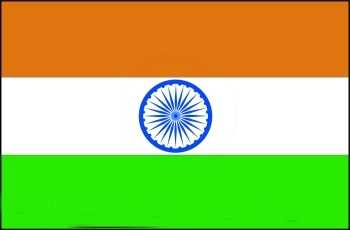

Ravi at the vegetable market
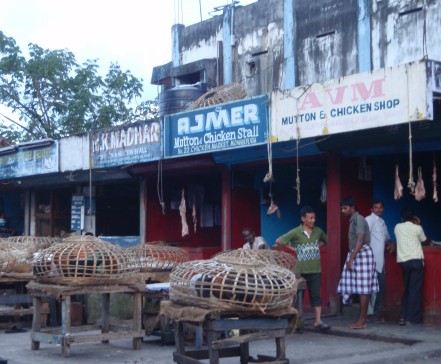
The meat market with live chickens and goats
The population of the Andaman Islands is now more than 300,000 with 100,000 living in or near Port Blair. This population consists of a few small dying indigenous cultures and mostly mainland India immigrants. Some of the indigenous cultures live on protected islands and repulse would-be-visitors with arrows.
Most of the non-indigenous residents speak their ‘mother tongue’ from the area of mainland India from which their family emigrated, but Hindi is the common language. Some English is also common among the better educated.
Although Hinduism is the predominant religion, religious intermarriage is common. The caste system is nearly extinct in the islands.
Port Blair is the only place to check in to and out of the Andaman Islands. We arrived after dark on December 27, 2009, and we opted to enter in the dark (always a tough judgment). The anchorage was neither lit nor obvious. In fact, it was not visible at all as we approached. Nita, the nagrivator, was quite disoriented and would have never found the anchorage. But, fortunately, Captain Bud knew the way.
When we got to the anchorage, there were five boats anchored, and only one had a ‘proper’ anchor light on. This is a real pet peeve of ours. The majority of boats in this part of the world run obnoxious strobes rather than anchor lights. We did not make the rules, but we know that strobes are intended to signal distress, and a small white light at the top of the mast is intended to signal being at anchor. So what should one make of a multi-color strobe that dangles somewhere in the rigging? We know what insurance companies will make of it if any of those boats are ever hit while at anchor without a proper anchor light on!
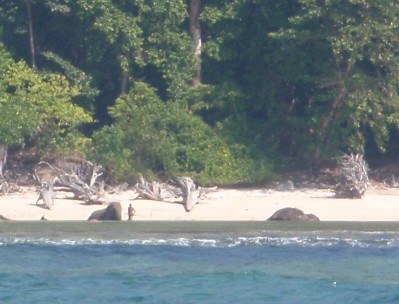
Elephants bathing on the beach – one sitting & one lying
Bud grumbled a few obscenities about the boats with strobes, but we quickly got past it as we dropped our anchor (and turned on our anchor light) and anticipated a night’s sleep. We would face the bureaucratic onslaught tomorrow.
Port Blair is infamous for the bureaucracy of its check-in procedure. Fortunately, they have been this picayune for years, so the information is available if one wants to prepare for the bureaucracy – and it is highly advised to be prepared. If a boat is well-prepared and arrives with the stacks of paperwork required, they might get checked-in in one day. Other boats that were less prepared have spent three days getting checked-in. Nita is well-organized and a believer in being prepared, so we arrived with the stacks of papers required. We got checked-in over two days.
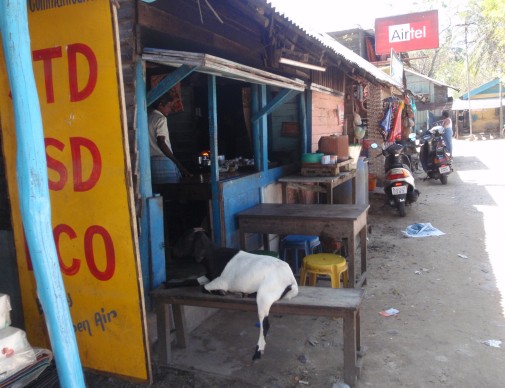
Marketplace in Port Havelock
Clearance is required from 1) immigration, 2) customs, 3) Coast Guard, and 4) harbormaster. Our first visit was from immigration. We had to go pick them up in our dinghy and transport three of them out to our boat. But it went surprisingly well, and we thought that the bureaucracy might have been exaggerated a bit. Then we were visited by the Coast Guard, and we met the bureaucracy face-to-face. They side-tied to us in a steel boat that was bigger than Passage, and the next few hours were reminiscent of Abbot and Costello’s “who’s on first” routine. There was one particularly officious lieutenant. Abdus Sadek Ali, who would have been comical if it had been 15 degrees cooler. But we got through their routine. Next we hauled three customs officials out to the boat, and we got off lucky with them. One customs officer had been creating a lot of problems for boats, but we had no trouble with him. We think it was because it was late in the day, and they wanted to get back ashore before the sun set. Also, we had all the information they requested including detailed inventories. But we would have to wait until the next morning to clear with the harbormaster.
We went ashore in the morning with the required planned itinerary in hand to get approval from the harbormaster. We met with a few ‘employees’ first, and they were essentially bureaucratic naysayers. Then we met with the harbormaster himself, and what a pleasant surprise. This is a truly pleasant man whom seems willing to help out visiting cruising boats however he can. We pinched ourselves to be certain we were awake and still in Port Blair. He did tell us that one or two of the islands we wanted to visit would require approval from the forestry department, so we scratched them off our list rather than spend any more time visiting any more officials. We still had far more islands approved than we would actually visit. He wished us a pleasant stay, and we were cleared!
After completing our formalities, we went for a bit of a tour around town. It is definitely India, but it felt a bit like India in a time warp – maybe 1960. Life appears much slower (except the driving) and simpler in the Andamans. We went for lunch at the Lighthouse Restaurant, and we came across friends (Ted on Tandem and his crew Dick and Shelly who we knew when they sailed Sandpiper) that we had not seen in a long time. They, too, had just cleared in, so we ran a few errands with them before returning to Passage.
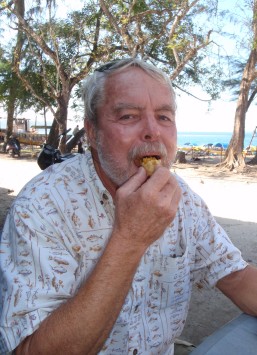
Delicious samosas
Our first day ashore is also when we met Ravi. Ravi is well-known as a cruiser’s friend, and he is touted to be able to help with just about any problem. We have heard that before, and these supermen rarely live up to their reputations, but we would discover that Ravi can and does. Ravi became an invaluable resource to us as our month progressed.
We experienced equipment failures on this trip like we have never before – and hopefully never will again. Sure, the marine environment is tough, and things break, but not like this!! Before we left, our watermaker packed it in and had to be rebuilt. Then, while in the Andamans, our equipment failures/breakages included:
And we hit a reef and had our prop fouled twice! But we cannot imagine how we would have dealt with these problems without Ravi. He was remarkably resourceful and willing to do whatever needed to be done to get the task accomplished. Ravi is a superman capable of super achievements, and he is one of the best friends a cruiser can have.
These equipment failures influenced our travels while in the Andamans; however, we will try to minimize their influence on our telling of our experiences. Despite all the problems, we had a wonderful time.
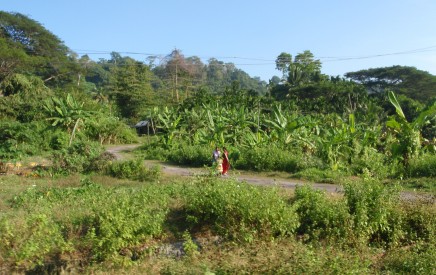
Pretty countryside on Havelock Island
We left Port Blair on the morning of December 30, and we went only a few miles south to Rutland Island. We spent a quiet afternoon and night in an anchorage by ourselves doing nothing other than recovering from the sail and check in experience.
We moved to North Cinque Island on December 31, and our autopilot stopped working along the way.A northeast swell is common in the islands this time of year, but we found a little bay open to the northeast that was lake calm, so we anchored. Within a few hours, Bud became quite sick, then the northeast swell arrived. We were rolling miserably, but it was dark and we were surrounded by coral bommies, so we would have to endure the rolling for the night and leave in the morning. In the morning, Bud was sicker and flat out in bed. Nita was not comfortable trying to weigh anchor and negotiate her way through the bommies without either someone at the helm and/or a functioning autopilot. She could not handle both the foredeck and helm in these conditions, so she decided to stay put one more night and hopefully Bud would be able to take the helm. A second miserable night of rolling.
On January 2, Bud was still sick, but he felt up to moving the boat around to an anchorage on the southwest corner of the island where we should be protected from the swell. Then our water pump went out. We did not get out of the swell, and now Bud needed to fix a water pump before we moved on – a job he was not up to doing. So we rolled for another three nights.
On January 5, we were able to sail from North Cinque Island to a pleasant anchorage called Chiriyatapu on the south shore of Rutland Island. It was a lovely spot, and Bud needed a few more days of recovery, so we stayed for three nights.
We returned to Port Blair on January 8 to address our equipment problems. Ravi was amazing! Also, our friends Mike/Linda on Integrity and Dave/Betty on Sundance were in the anchorage. They were both on their way to the Indian Ocean, so we wanted to spend some time with them. We stayed in Port Blair for three nights, and we said a sad ‘goodbye’ to our friends as they left for the Indian Ocean. Then we headed off to see what else we could break.
We had a nice light air sail to Havelock Island on January 11. The beaches along the west shore are numbered, and we anchored at Number 7 – the most popular. There were a few other boats around, but it certainly was not crowded.
It was quite foggy in the morning, and as the fog burned off we noticed elephants on the beach. There is a ‘retirement camp’ for former logging elephants on the island, and they get to come down to the beach every morning to cool themselves in the water. It was a beautiful sight.
We took a bus to town, and it turned in to more of an experience than we were hoping for. Town was small, friendly, and charming. We had lunch and samosas down near the jetty. But we had a hair-raising bus ride back to Number 7 during which we both wondered if we would survive. Obviously we did, but we do not want to repeat that experience!
There was a meteor shower while we were anchored at Havelock #7, and the evening skies were clear enough to see countless ‘shooting stars’. But after only two nights, we wanted to move on and see a few islands further to the north.
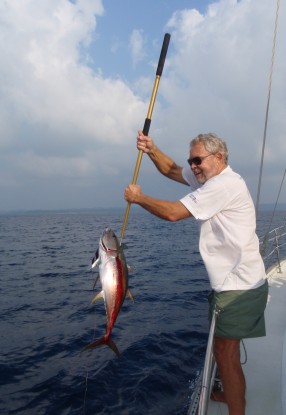
This was a very nice yellow-fin tuna
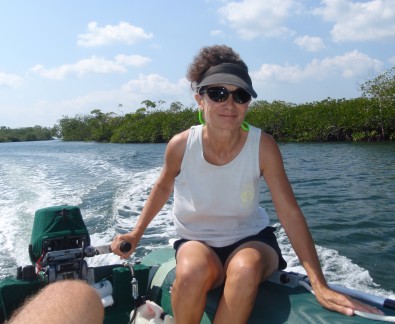
Some areas in the mangroves were wide open
The next morning, January 14, we went north to the uninhabited Button Islands. South Button is a rugged little piece of rock with a small natural cove and only one small and shallow anchorage. There were a few small dive boats out there; however, the anchorage is much too exposed for overnight use, so we circled the island to see it from all angles then headed up to Middle Button Island.
Middle Button is considerably bigger than South Button, but it is still small by any standards. We anchored on the southwest corner and went exploring by dinghy. We were able to circle the island in the dinghy and see all its moods depending on its orientation to the northeast swell. But that swell reached around to our anchorage during the night, and it became uncomfortably rolly. So we moved on in the morning.
On January 15, we headed southeast with plans to visit Inglis Island and/or the east coast of Henry Lawrence Island. We were intercepted by both police and coast guard telling us that there was some ‘unsafe activity’ going on in the area, and we were not permitted to go to either island. We were told not to return down the channel we had sailed the day before (between John Lawrence and the west shore of Henry Lawrence) but to go to Havelock. We did not want to find ourselves in the midst of unsafe activity, so we headed for Havelock. And what a sail we had going there.
This was the day our computer quit. In retrospect, it was a good drill. Electronic charting is so easy that one could forget how to navigate without it. It was a good exercise to navigate around the islands without it. We also had perfect spinnaker winds, so we sailed down the west coast of Havelock with it flying ahead of us. Then we caught another yellow-fin tuna – a big one.
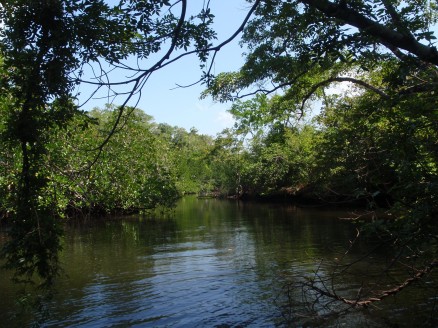
Some areas in the mangroves were narrow and overgrown
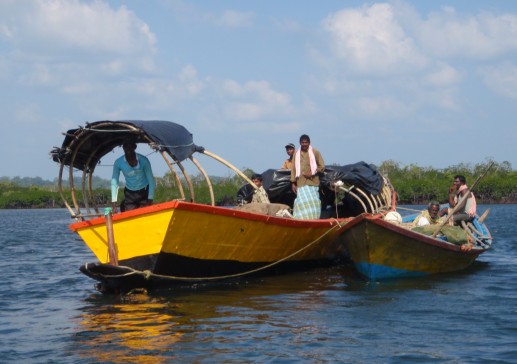
Local fishermen on Havelock Island
We saw there were five boats in Havelock #7, and we wanted a bit more privacy, so we went a bit further south – don’t know the number. We invited our friends Warrick/Marion on Nimbus II to stop by for some sashimi, and we had coffee while swapping stories. Again, the anchorage became uncomfortably rolly during the night, so we stayed only one night.
The next morning we moved further inside, and it was noticeably more comfortable. We settled in for four nights. We had great fun exploring the extensive mangroves by dinghy and trying to communicate with local fishermen who spoke no English whatsoever.
On January 20 we moved yet further south on Havelock Island. This area was remarkable for its beautiful reefs and fish. We snorkeled and were pleased to find such a healthy reef system. We stayed for two peaceful nights.
But it was time to return to Port Blair. We had things to fix before heading back to Thailand, and we absolutely positively had to leave by January 26.
Our fuel pump was not working, so on January 22, we sailed in to Port Blair with our spinnaker. We had notified port control that we were without power, and they notified the few boats underway, and we had plenty of room to make our way in. We had lots of stuff to fix, and we also took on diesel. Somehow we got our chores completed (kudos to Ravi!), and we checked out on January 25 with all but immigration. They wanted to meet us on the dock on January 26 at 0800. We were there, and so was Ravi with dosai masala to send off with us. What a jewel. So our eventful trip to the Andamans was coming to an end – except for the sail back to Thailand.
Come along on our sails between the Andaman Islands and Thailand or go back to our Destination page for Thailand.